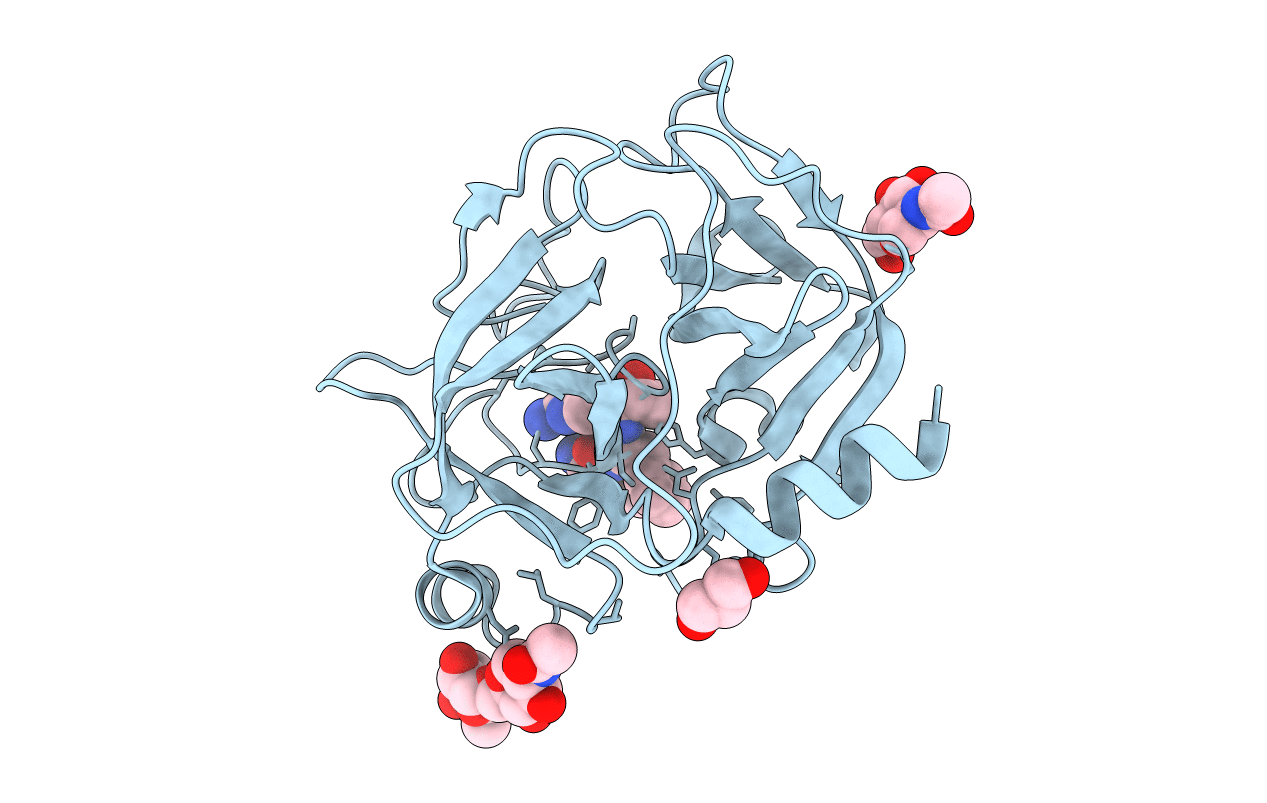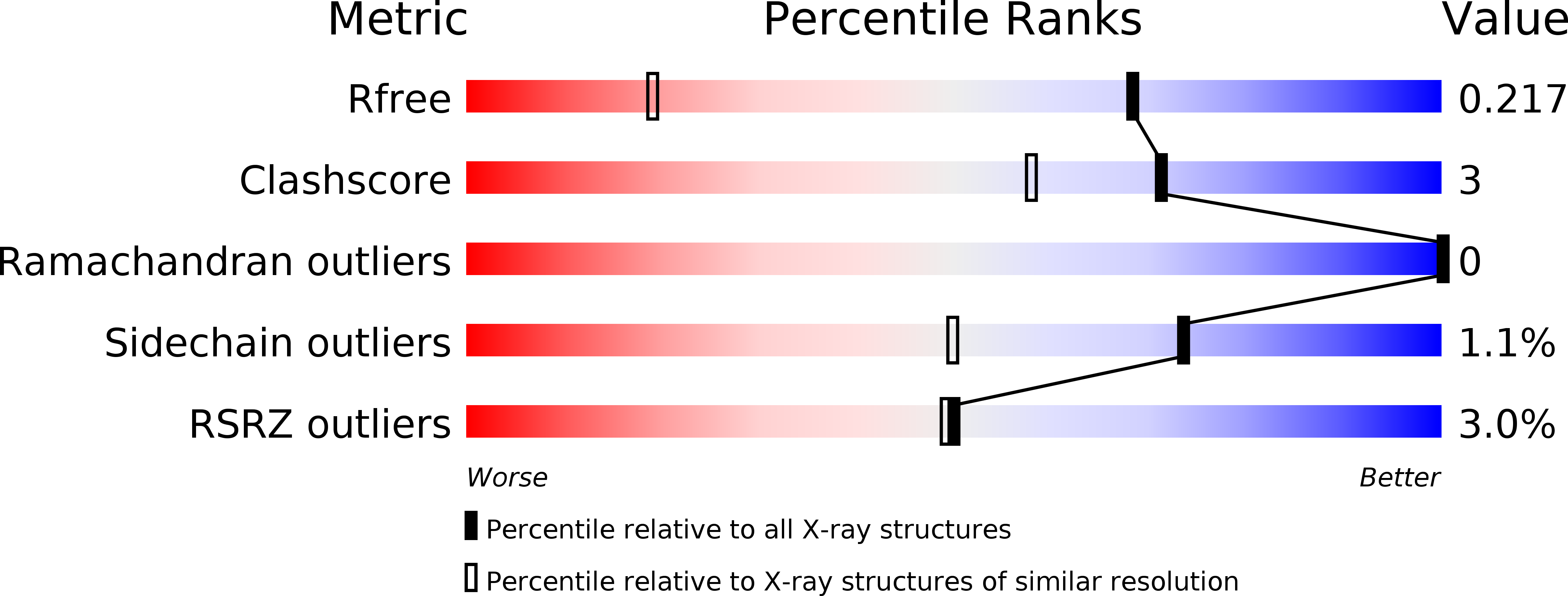
Deposition Date
2014-04-25
Release Date
2014-09-03
Last Version Date
2024-11-27
Entry Detail
PDB ID:
4Q7Z
Keywords:
Title:
Neutrophil serine protease 4 (PRSS57) with phe-phe-arg-chloromethylketone (FFR-cmk)
Biological Source:
Source Organism:
Homo sapiens (Taxon ID: 9606)
Host Organism:
Method Details:
Experimental Method:
Resolution:
1.40 Å
R-Value Free:
0.21
R-Value Work:
0.19
R-Value Observed:
0.19
Space Group:
P 21 21 21


